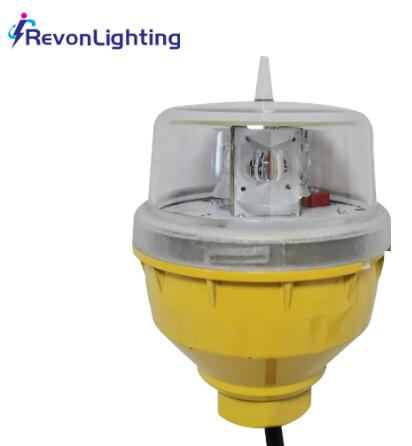Posted: 2024-05-23
The Federal Aviation Administration (FAA) plays a crucial role in ensuring the safety and efficiency of the national airspace system in the United States. One of the key regulations established by the FAA is the FAA L-810 specification, which pertains to obstruction lighting systems. In this article, we will explore the significance of the FAA L-810 standard and its impact on aviation safety.
Understanding the FAA L-810 Standard:
The FAA L-810 specification outlines the requirements for red obstruction lights used on various structures, including buildings, towers, chimneys, and other tall structures. These lights are designed to make the structures visible to pilots, particularly during nighttime or low visibility conditions. Compliance with the FAA L-810 standard ensures that obstruction lights are effective in alerting pilots to potential obstacles in their flight path.
Key Features of FAA L-810 Compliant Lights:
Obstruction lights that meet the FAA L-810 standard must adhere to specific requirements, including light intensity, color, flash rate, and beam distribution. The lights must emit a steady red light with a predetermined intensity and be installed at designated heights based on the structure's elevation. Additionally, they must have appropriate beam distribution patterns to ensure maximum visibility for aircraft.

Ensuring Visibility and Safety:
The primary objective of the FAA L-810 standard is to enhance aviation safety by improving the visibility of structures that may pose a hazard to aircraft. These lights play a crucial role in preventing collisions and providing pilots with essential visual cues. By following the FAA L-810 guidelines, structures can be properly equipped with obstruction lights to ensure they are visible within the national airspace system.
| faa l 810 | LOW LI light |
| Low intensity obstruction light | Low intensity obstruction lights |
| 1 | 2 |
Compliance and Certification:
To ensure compliance with the FAA L-810 standard, obstruction lights undergo rigorous testing and certification processes. Manufacturers must demonstrate that their products meet the specific requirements outlined by the FAA. Compliance with the standard may involve testing for light intensity, color accuracy, flash rate, durability, and other performance metrics. By adhering to these standards, manufacturers provide assurance that their lights are reliable and effective.
Maintenance and Monitoring:
Once installed, FAA L-810 compliant obstruction lights require regular maintenance and monitoring to ensure continued functionality. This includes periodic inspections, cleaning, and testing to ensure the lights are operating correctly. Some systems may also incorporate remote monitoring capabilities, allowing for real-time troubleshooting and ensuring the lights are always operational. Proper maintenance is crucial to guarantee the lights' continued effectiveness in enhancing aviation safety.
Conclusion:
The FAA L-810 standard plays a critical role in ensuring the safety of aviation operations by regulating the use of red obstruction lights on various structures. Compliance with this standard ensures that structures are equipped with lights that meet specific requirements for visibility and performance. By adhering to the FAA L-810 specifications, stakeholders in the aviation industry can contribute to the overall safety and efficiency of the national airspace system.